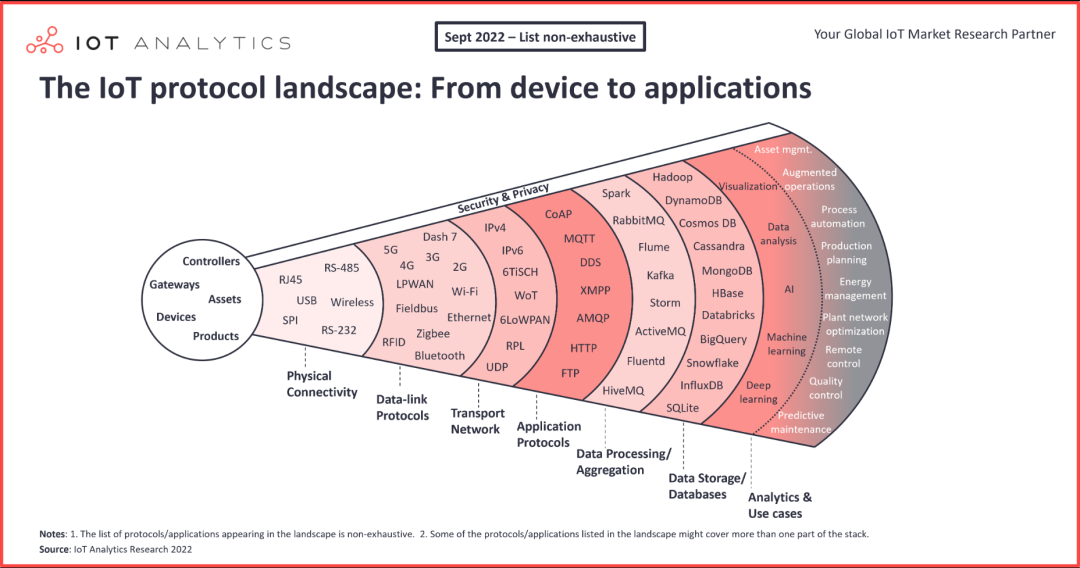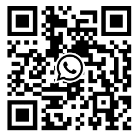The IoT protocol refers to the protocol used for inter-device communication and data transmission in the IoT environment. According to the different roles, the Internet of Things protocols can be divided into two categories: transmission protocol and communication protocol. Transmission protocol: mainly responsible for networking and communication between devices in subnets, such as Wi-Fi, 6Ethernet, RFID, NFC (Near Field Communication), Zigbee, 6LoWPAN (IPV 6 low-speed wireless version), GSM, GPRS, GPS, Bluetooth, 3G, 4G, 5G, etc. These protocols ensure the security and reliability of the data transmitted over the network. Communication protocol: mainly run on the traditional Internet TCP / IP protocol, used for equipment for data exchange and communication through the Internet. For example, MQTT, CoAP, and AMQP are all common IoT communication protocols. These protocols are characterized by their being based on existing Internet technologies for more efficient data transmission and lower power consumption. This paper focuses on the common communication protocols in IoT application scenarios.

IoT list of common Internet of Things | ||
type | Protocol coding | Description and scene |
General agreement | MQTT | Protocol description: MQTT is a lightweight publishing and subscription information transmission protocol based on TCP / IP protocol, featuring a compact message, light and reliable message, supporting QoS, etc. |
Modbus TCP | Protocol description: Modbus protocol is an application layer message transmission protocol, including three message types: ASCII, RTU and TCP. By this protocol, the controllers can communicate between each other, via a network (e. g., Ethernet), and other devices. | |
HTTPS | Protocol description: HTTP protocol hypertext transfer protocol, data transmission based on the request / response model. | |
CoAP | Protocol Description: CoAP (Constrained Application Protocol) is a web-like protocol in the Internet of Things world, using a request / response interaction model. The protocol design is refined, using UDP protocol for data transmission, which is suitable for resource-limited low-power equipment, especially for NB-IoT equipment. Application scenario: It is widely used in low-power devices such as water meters and electricity meters. | |
UDP | Protocol Description: UDP (User Datagram Protocol) is a non-connected protocol that does not provide reliability and flow control for data transmission, but has lower latency and less overhead. | |
TCP | Agreement Description: Standards for internal development and adoption. Private protocols are flexible, often used within a company or organization, customized on demand, easy to upgrade, and flexible. The specific implementation requires a manual deployment by the customer. | |
GB/T28181 | Agreement description: National standard GB / T 28181- -2016 "Technical Requirements for Information Transmission, Exchange and Control of Public Security Video Surveillance Network System" is a national standard in the field of video surveillance. | |
OPC-UA | Protocol Description: OPC Unified Architecture (OPC Unified Architecture) is an open source, platform-independent standard protocol where devices using different systems can send messages between the client and the server over the network. | |
OPC-DA | Protocol description: OPC-UA rather than OPC-UA, OPC-UA is more suitable for remote access, and OPC-DA is suitable for single-system data access. OPC-DA is the real-time data access specification, defining the relevant standards including data value, update time and data quality information. | |
LoRa | Protocol description: LoRa is a low-power LAN wireless standard developed by Semtech company, which solves the technical problem of farther distance than other wireless methods under the same power consumption conditions, and realizes the unity of low power consumption and long distance. | |
Industry agreement | JT/T 808 | Protocol description: Communication Protocol and Data Format of Terminal of Satellite Positioning System of Road Transport Vehicles, mainly used for "two passengers and one dangerous" vehicles. |
HJ212 | Protocol description: Data transmission standard protocol used in the environmental protection industry in the Data Transmission Standard for Pollutant Online Monitoring (Monitoring) System. | |
SL651 | Protocol description: Hydrological Monitoring Data Communication Regulation, hydrological monitoring and other equipment need to follow this specification. | |
GB3761 | Protocol description: it is a national standard electricity meter protocol plug-in, which adopts a new data acquisition technology to convert the real-time working condition data of electricity meters into electrical signals, which is provided to the metering system, and can carry out real-time recording, statistics, meter reading and settlement of electric energy. | |
IEC104 | Agreement Description: IEC104 The Regulation is formulated by the International Electrotechnical Commission. IEC104 The protocol of the IEC101 application service data unit (ASDU) with the network protocol TCP / IP transmission standard, the standard provides the communication protocol basis for the network transmission of remote information. The ASDU of 104 and 101 can guarantee the standardization of the statute and the reliability of communication. | |
DL645 | Agreement description: DL / T 645 is the specification and standard for the physical connection of data exchange between the multi-functional energy meter and the data terminal equipment and the protocol. This equipment adopts the standard specification of DL / T 645-2007 "Multi-functional Energy Meter" proposed by China Electricity Council to realize the information communication between the equipment and the multi-functional energy meter. | |
Contact: Qui
Phone: 18146178586
Tel: 18146178586
Email: qui@zonewu.com
Add: 1501-3, Building F03, Phase III, Software Park, Jimei District, Xiamen City, Fujian Province, China
